At Dentsu Lab Tokyo, we call people who express themselves using technology "Creative Technologists." In this series, we interview Creative Technologists worldwide about their work and creations, exploring what new forms of expression are emerging from technology.
Technology Work That's Neither Web Nor App: Elise Co
The eighth interview in our series with creative technologists features Elise Co. She is the founder of aeolab, where she creates products leveraging her strengths in design and programming. Her clients include Honda, BMW, Sony, Samsung, and Disney. Capable of designing both software and hardware to create new products, we asked her how she works with technology.
(This interview was conducted online via messaging.)
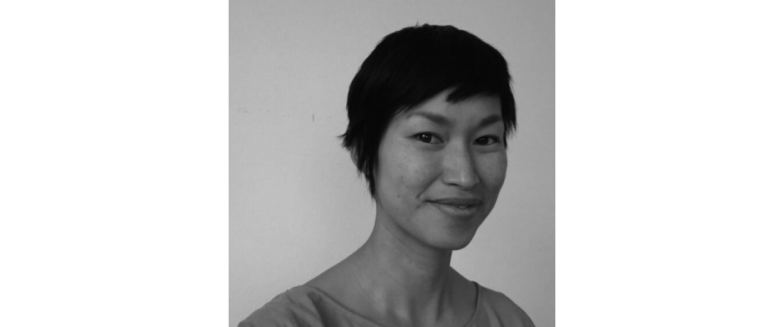
Elise Co
Taking on work that IT startups can't handle
Kida: Tell us about your background.
Eries: I earned a Bachelor of Architecture from the Massachusetts Institute of Technology (MIT) and a Master's degree from the MIT Media Lab. At the Lab, I was part of the Aesthetics and Computation Group (ACG) led by John Maeda. Through interactions with fellow students at the Media Lab, I developed an interest in electronics. Combined with my longstanding fascination with fashion, I wrote my master's thesis on computation as an expressive element in fashion.
After a brief stint at a design company called Small Design Firm in Cambridge, Massachusetts, I moved to Basel, Switzerland, where I worked as a teacher for several years. I then returned to Los Angeles.
Kida: What sparked your interest in the world of science and technology?
Ellis: If you go to MIT, you're bound to discover the fascination of science and technology. I think the coolest thing at MIT is the "geeky kits" that Computer Science majors carry around. For example, something that looks like just a suitcase might contain digital circuits they designed and built themselves. The annual winter robotics competition is another example.
As an undergraduate, I participated in the Media Lab's UROP (Undergraduate Research Opportunities Program) and assisted with graphic design work involving early ACG graduate students. When that student left the project, Professor Maeda assigned me to work on coding an interpreter (a program that translates human-written source code into executable code for the computer).
This became the catalyst for me to start programming and implementing digital-related work. Professor Maeda was an incredibly good mentor, and he really sparked my motivation. He is one of the people who has had the most significant impact on my life, and he still does.
Kida: What prompted you to found aeolab?
Elys: I launched aeol ab in 2006 with my partner, Nikita Pashchenkov. We were both freelancing on projects, but we saw an opportunity to take on a Sony project and decided to collaborate. We deeply respect each other's individual skills and activities, and we thought we should try doing what we could.
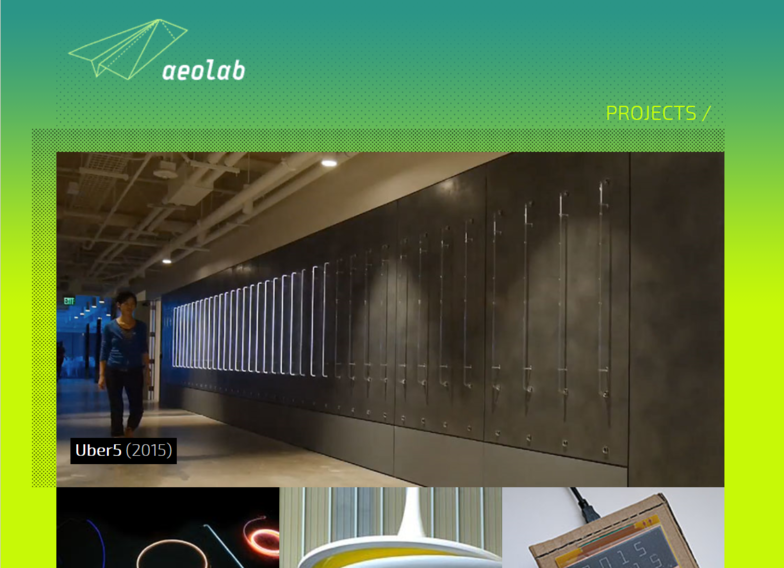
Kida: What is your role at aeolab?
Elise: Nikita and I handle most of the work. Broadly speaking, I focus on software and Nikita handles hardware, though we also work on each other's tasks. We collaborate on project management, conducting research, and conceptualization.
Kida: Could you tell us about the origin of the company name "aeolab"?
Elise: I love wordplay and always thought I was good at coming up with project names. However, when we were preparing to start the company together, we struggled to come up with a good idea. "aeolab" has no specific meaning, but we both liked the way the letters looked together. Both of us have always loved science books and had read about "aeolight." It refers to gas-filled tube lights once used in optical recording (a method where sound signals are converted into light and recorded on media like film). Also, Aeolus is the god of wind in Greek mythology.
Kida: I see. So, tell me about your project.
Eris: Our project is truly multifaceted. It involves data visualization and interactive installations, but our main work is researching prototypes for cutting-edge, highly sophisticated technologies. Most are for large corporations, and every project is confidential.
Kida: Could you elaborate on what makes aeolob's approach unique?
Eries: Our strength lies in creating prototypes that actually function and can be directly experienced. We specialize in tackling problems where no one knows how to solve them and making them a reality. We're particularly skilled in designing custom hardware (modified products) and communication networks (connecting distant things through technology). For example, in one of our early projects, SONY's Moodmark, we built a system to activate networked objects.
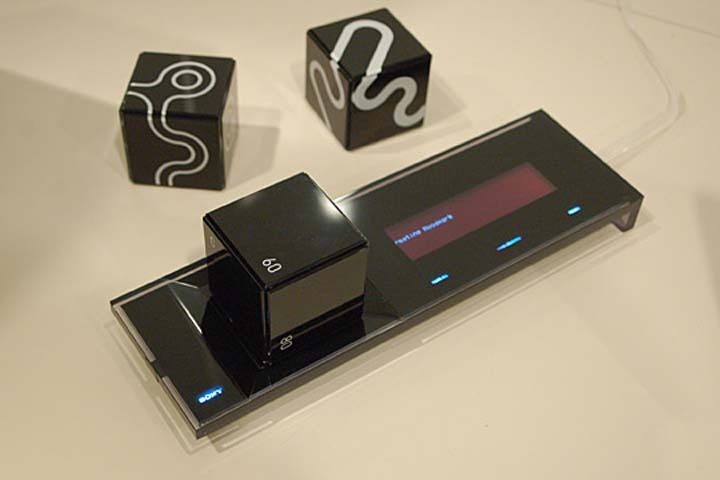
Moving the cube on the left activates networked lamps. You can save your preferred brightness and position.
(Moodmark)
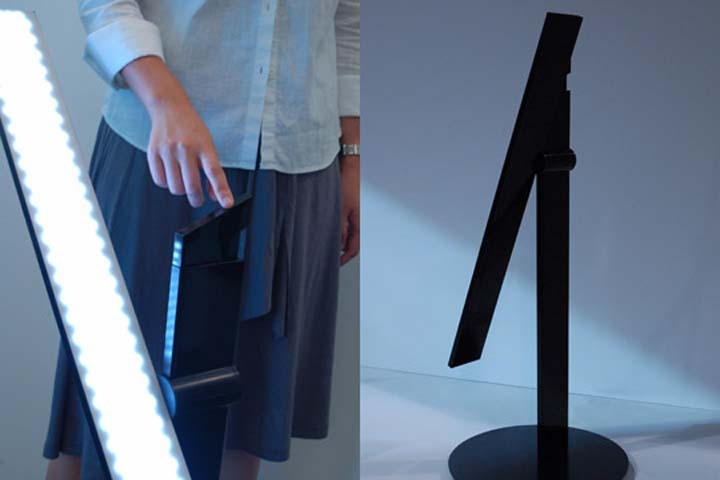
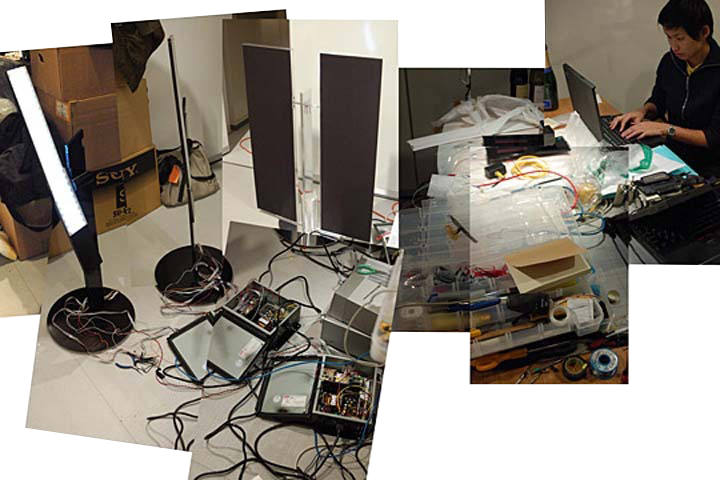
Production Process
Kida: What do you think is the deciding factor for clients when they decide to hire you?
Eries: I believe we get commissioned when clients have an idea but don't know how to realize it, and it doesn't fit standard project types like web design or apps.
We often serve as a bridge between engineering and design. We implement functional solutions, but design always takes precedence. We understand how to strategically prototype to efficiently arrive at key design concepts.
Why Startups Come to Us
Kida: We've seen a lot of work recently related to tech startups like Uber. I think tech startups and new digital expression are a good fit. Can you tell us about that synergy?
Eries: As you mentioned, much of what large tech startups like Uber commission from us is remarkably expressive and distinct. The Uber Wall, for instance, is a piece made from crypton gas and handmade tubes with simple interactions. It represents the movement of both data and people, constantly changing throughout the day. On the other hand, with smaller startups, it often seems they need to advance their technical research and prototyping further to connect it to product development.
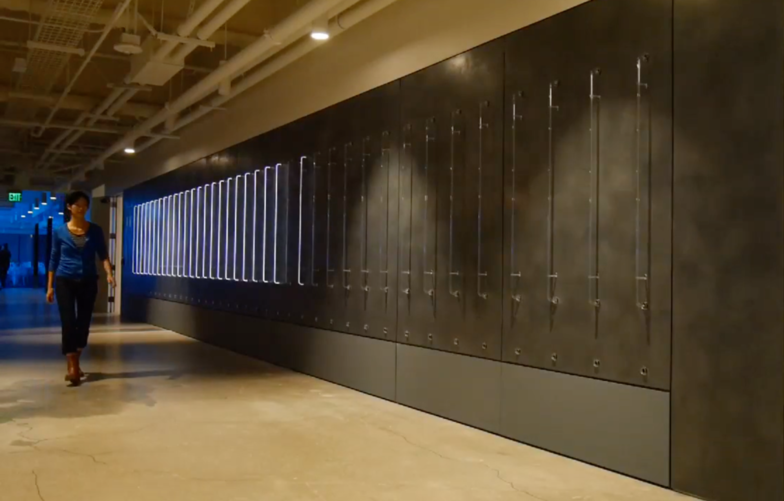
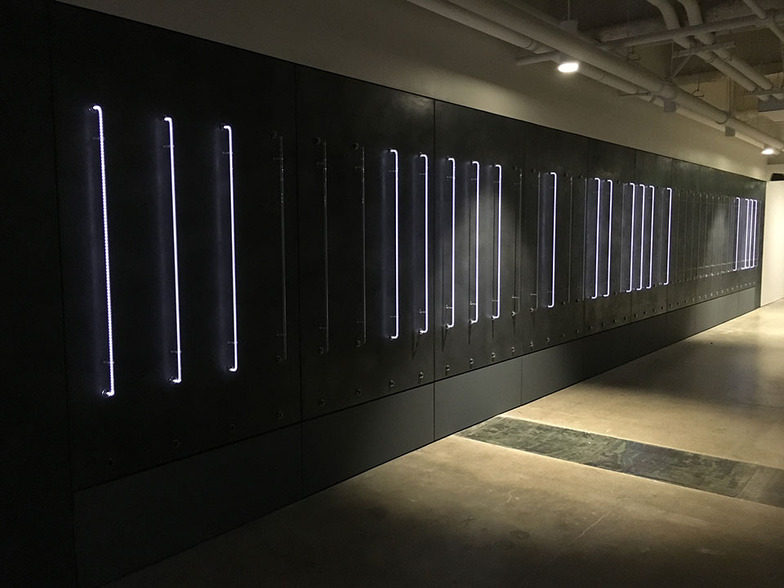
Kida: How do projects with startups typically begin?
Eries: Most come through word of mouth. We've been around for ten years now, and I'm delighted we've had the chance to work with so many wonderful people. While we remain relatively unknown, I'm grateful that many people remember our projects.
Kida: You handle diverse projects, from iPhone accessories to exhibition installations. How do you select the right technology for each client's request?
Eries: Over the years, I've gained extensive experience by dabbling in various platforms and programming languages, and tinkering with different microcontrollers and components. Learning new things is truly enjoyable. I believe the most important thing is being strategic and resourceful, like a ninja's skill—deciding which parts to use, what to customize, and how to assemble everything to make it function.
Kida: What do you think women working in creative tech and the information industry can do to improve the work environment for other women?
Eries: I think it's about hiring women, conceptualizing and strategizing from a female user's perspective, and supporting and mentoring other women. Women working in STEM fields should be more widely recognized. That's why I believe teaching at Art Center College of Design is important.
Kida: Finally, what would you like to create now?
Elise: I want to develop aeolab's own devices and products, and we have several internal projects underway. Personally, I find the current political climate deeply troubling and feel compelled to use our technology as a political statement. I want to shout out loud: "All people are equal. Science, logic, and human dignity matter. We must not yield!"
Kida: Thank you very much.
[After the Interview]
The same job never comes twice
Creative technologists are like magicians. They bring to life things no one has ever seen or knows how to create. For Sony's Moodmark, we needed to shape the concept of a "furniture bookmark." We're building a device that remembers comfortable music and light levels, allowing furniture to always return to that state.
Working on something no one has ever made before feels closer to being an artist. In fact, Ms. Elise's work, Atmosphere, was exhibited at the Museum of Modern Art in New York.
However, in business, the client gives the green light for projects. Aelie must respond to their requests. This is similar to the roles of an art director or copywriter in an advertising agency. Furthermore, in creative technologist work, examples of serial advertising are rare. Since each project involves a new approach to move people's hearts, the same kind of work rarely comes around.
Therefore, once a project is delivered, Elise must start from scratch again. Mass production of identical products isn't possible. It's about continuously creating one-of-a-kind pieces. Can aeolab, always pursuing new endeavors, maintain stable income?
A clue lies in the fact that projects with companies come through word of mouth. The beginning of this was likely the connection with Sony. They must have been a client eager for challenges.
By meeting expectations on the first job, the next job likely came. Then meeting the next expectation. I believe the mechanism for sustaining the company in a position where the same job never comes twice lies in continuously meeting the demands of unknown endeavors.
Photo Credit: Nikita Pashenkov
Dentsu Lab Tokyo features in-depth interviews with creative technologists worldwide.











